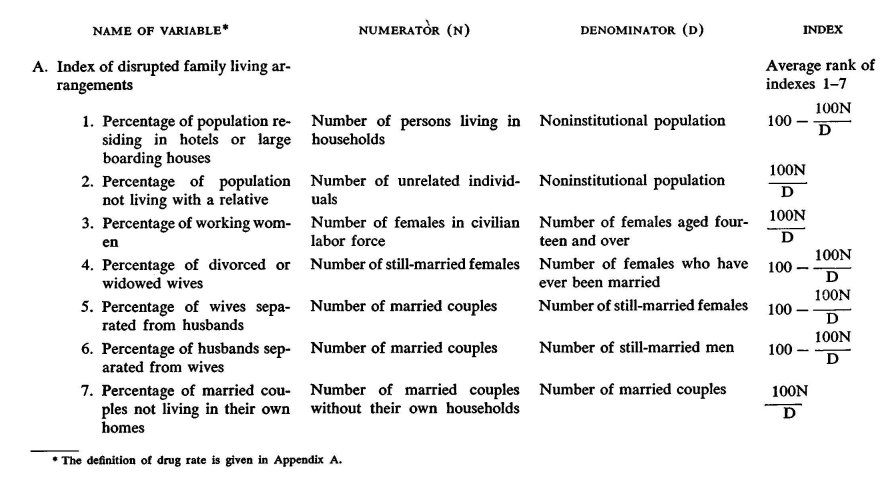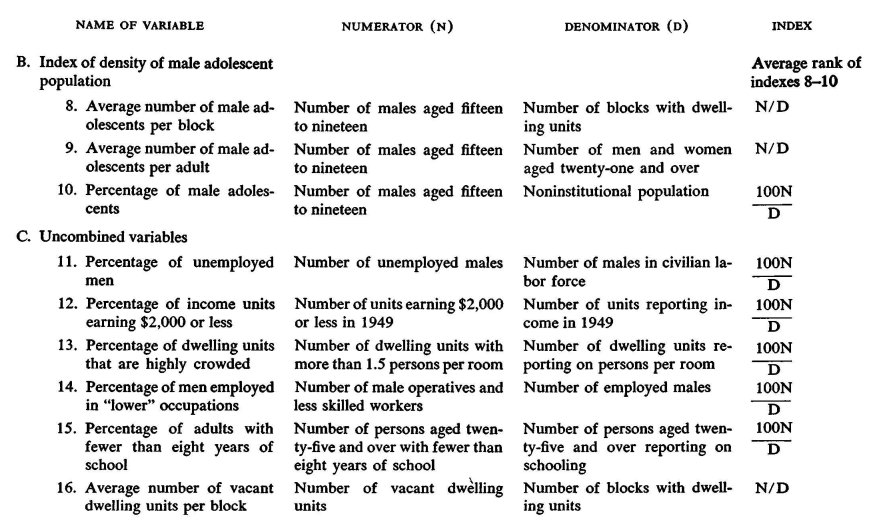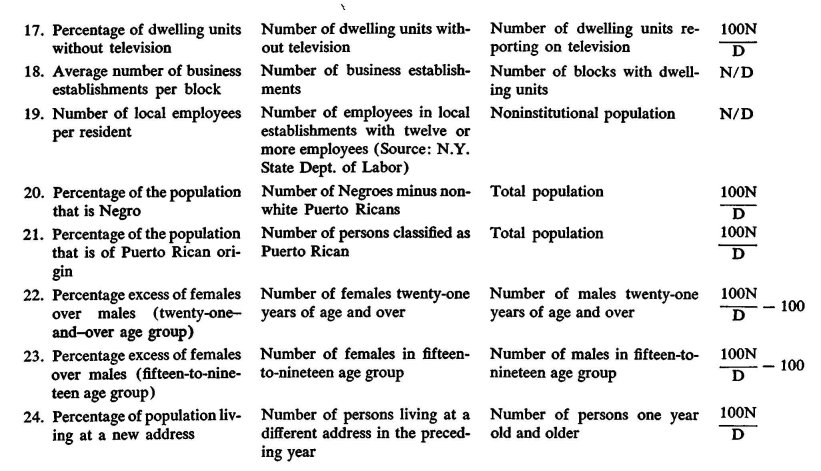APPENDIX B Definition of Independent Variables
| Books - Narcotics Delinquency & Social Policy |
Drug Abuse
APPENDIX B
Definition of Independent Variables
For the analysis of data in the epidemic and border-zone areas, the variables listed below under the lettered headings were combined into more comprehensive indexes by ranking census tracts for each component and averaging the ranks. To be so combined, components had to satisfy two criteria: (1) they had to be conceptually linked to a more inclusive concept, and (2) they had to show similar patterns of correlation in a preliminary analysis in each of the three boroughs. A number of such combined indexes that had been considered were abandoned because the components did not satisfy the second criterion. The preliminary analysis was carried out on the census tracts in the epidemic areas; correlations were computed by dichotomizing each of the variables as nearly as possible at its median value and calculating phi coefficients.' The original intention had been to restrict the analysis to the epidemic areas, and the comparison of the epidemic and nonepidemic areas was not carried out until later (even though it is reported earlier in Chapter III). On the basis of the latter analysis, it became apparent that, on borough-wide bases, the respective components of the inclusive indexes do not "behave" in the same way. Hence, for the epidemic-versus-nonepidemic—area comparisons, the data are reported for the individual variables.
1 The phi coefficient is identical with the regular Pearsonian correlation as applied to dichotomous variables. See Appendix C.



| < Prev | Next > |
|---|












